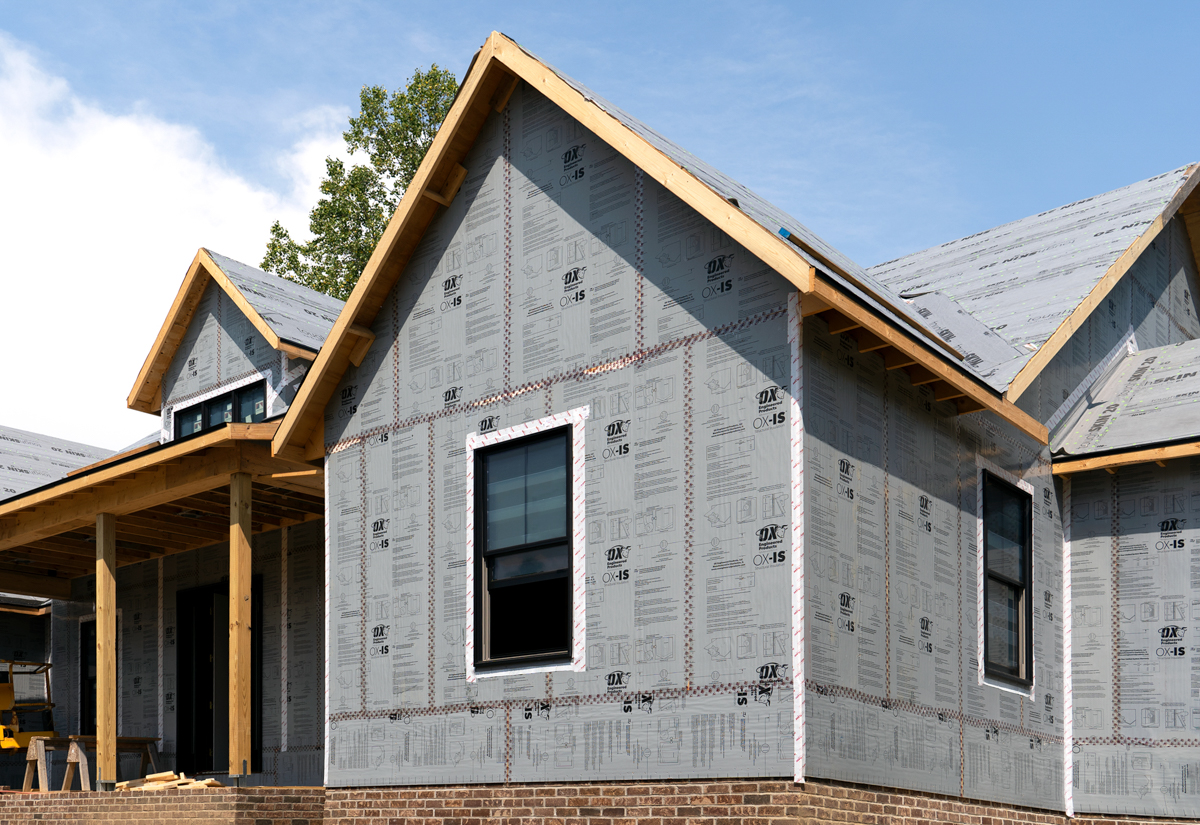CONTACT OX
TO LEARN MORE
Give us a call at 800-345-8881 or fill out the form below
and we’ll get back to you within two business days.

For homebuilders and their approach to their trade, one thing is certain: Change is a constant. Becoming more commonplace are governmental adaptations to improving codes that align with international energy alliances and an overall push for a more sustainable building approach.
Cities like Denton, TX, which had previously followed the International Energy Conservation Code from 2015, are amending local codes that run in tandem with the International Code Council’s 2021 guidelines. Area homebuilders and developers anticipate that larger cities like Dallas/Fort Worth will soon follow suit.
Fortunately, general contractors and homebuilders can ensure advance compliance by learning to build with the appropriate materials now to help them meet code, or by supplementing their go-to products with additional high-performance insulation solutions.
What’s Within the New Standards?
Specific changes most notably apply to the thermal envelope, which will be tested in accordance with codes such as ASTM E779, which uses fan pressurization to determine air leakage rate.
For builders, eliminating air leakage is critical for all types of construction, especially in atypically hot or cold climates. The more air permitted to enter or exit, the less thermally efficient the building is. In turn, greater reliance on HVAC is required.
Measured air leakage is given a specific restriction value—in this case, 0.30 cfm/ft2 of the testing unit enclosure area at a pressure differential of 0.2 inch water gauge (50 Pa). In multifamily spaces, each unit is considered an individual testing unit where the building’s air leakage is a weighted average. Identifying proper air barrier and insulation methods will be critical for builders as codes change throughout the country and tests become even more stringent. Integrated products that combine sheathing, control layers, and insulation in one make it even easier for builders to adapt.
R-Value Considerations
One of the most considerable changes to codes such as those implemented in Denton are updates to insulation minimum R-values. In climate zone three, for instance, builders of wood frame structures must meet R-values of 19 or 13+3ci or 0+15ci. And in many other regions of the United States, these values jump to R-20.
For builders in these areas who are accustomed to using cavity insulation only, supplementing with more efficient continuous insulation solutions can help to maintain compliance with these codes.
To aid with compliance, building supply companies such as OX Engineered Products have materials that are already helping builders exceed these codes, and even those that may be on the horizon. After all, preparations for the 2024 International Energy Conservation Code are already in the works.
OX offers solutions for these codes that are practical, easy to install, and still remain cost competitive. For example, products such as OX-IS – a robust polyisocyanurate continuous insulation – serves as a 4-in-1 weatherization system that is installed directly on exterior, above-grade 2×4 wood-framed walls. It is, itself, an impressive insulating barrier, and comes in 1.70” R-10, 1.00” R-6, 0.92” R-5, and 0.50” R-3 configurations.
When coupled with R-13 cavity insulation, the 1.70” R-10 OX-IS offers ample protection in the toughest climate zones, four through eight.
Rationale & Benefits
As part of the federal Inflation Reduction Act of 2022, the extension of the 45L tax credit also means that homeowners and developers can receive financial incentives for upping the energy efficiency of new residential construction.
Though they may be stringent, such code changes are designed with the evolving needs of homes and their occupants and pay more attention to overall health, wellbeing, and energy efficiency. In fact, municipalities like Denton, TX, specifically make mention in their amendment that the shift “is in the best interests of public health, safety and welfare.”
In addition, some cities are simultaneously ensuring adherence to these codes through separate health and building standards commissions.
Why the Switch is Worthwhile
Though code changes may elicit initial resistance from developers, general contractors, or builders, it is important to remember why they exist.
Thanks to better technology, more advanced installation techniques, and higher-quality engineered products, builders can ensure that occupants remain as comfortable as possible in their homes for generations. Measurements like R-values serve to help families grow happily and with less burden from increasing energy costs. In addition, strides being made to reduce energy consumption have environmental benefits, such as lower greenhouse gas emissions.
In the truest sense, the industry’s collective and individual adherence to upgraded building codes and global energy conservation is for the benefit of future generations. This is why it is important for cities around the world to contribute and do their part, just like Denton and many others have.
